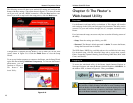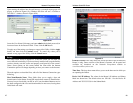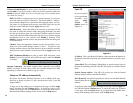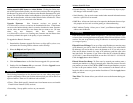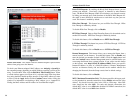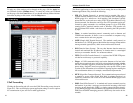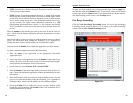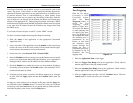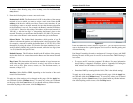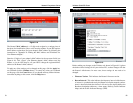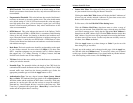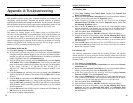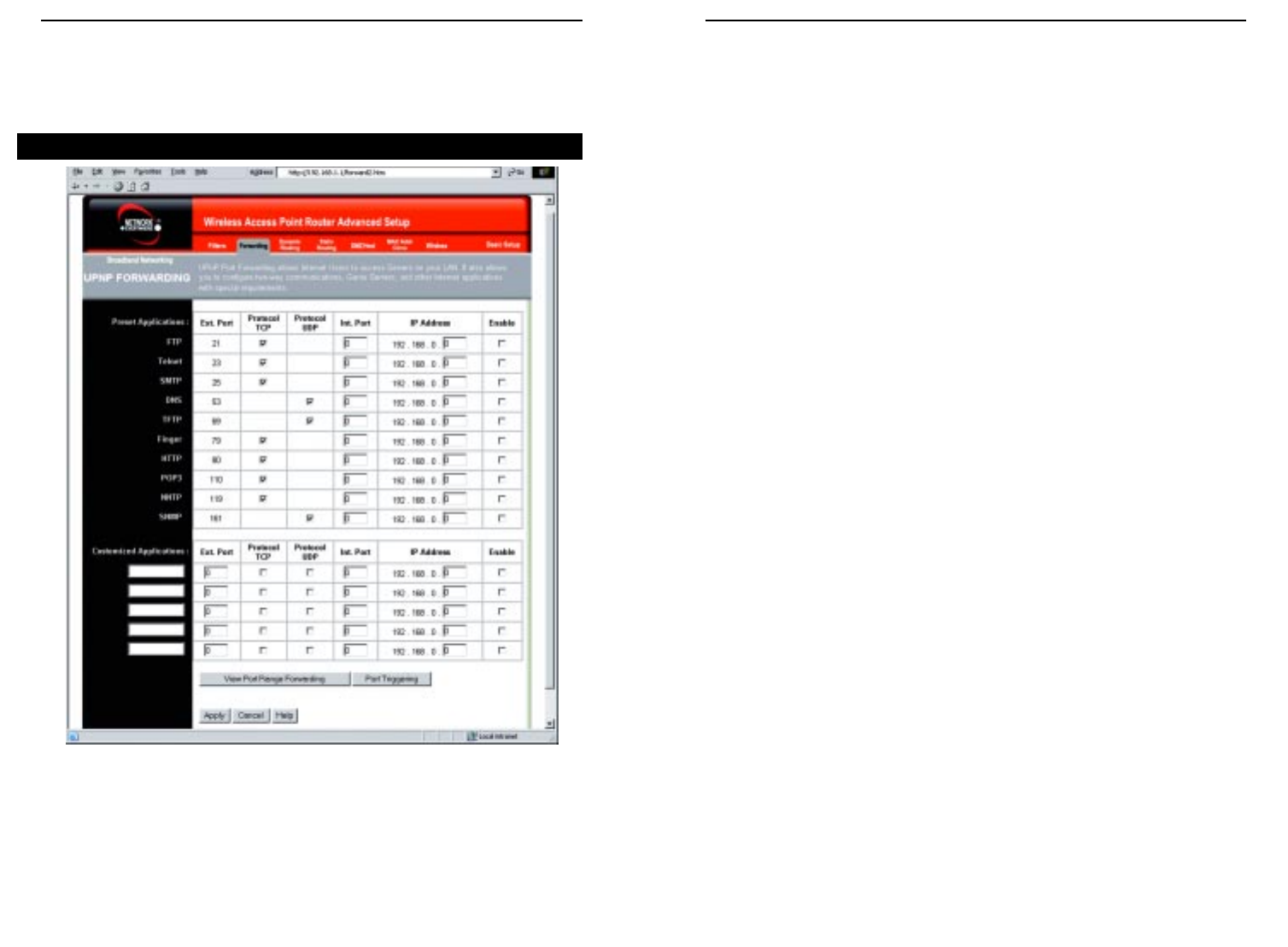
Wireless Cable/DSL Router
42
Network Everywhere
®
Series
41
The Preset Applications at the top of the list are among the most widely used
Internet applications. They include the following:
• FTP (File Transfer Protocol) A protocol used to transfer files over a
TCP/IP network (Internet, UNIX, etc.). For example, after developing the
HTML pages for a website on a local machine, web developers typically
upload the files to the web server using FTP. FTP includes functions to log
onto the network, list directories, and copy files. FTP operations can be per-
formed by typing commands at a command prompt or via an FTP utility
running under a graphical interface such as Windows. FTP transfers can
also be initiated from within a web browser by entering the URL preceded
by ftp://.
• Telnet A terminal emulation protocol commonly used on Internet and
TCP/IP-based networks. It allows a user at a terminal or computer to log
onto a remote device and run a program.
• SMTP (Simple Mail Transfer Protocol) The standard e-mail protocol on
the Internet. It is a TCP/IP protocol that defines the message format and the
message transfer agent (MTA), which stores and forwards the mail.
• DNS (Domain Name System) The way that Internet domain names are
located and translated into IP addresses. A domain name is a meaningful
and easy-to-remember “handle” for an Internet address.
• TFTP (Trivial File Transfer Protocol) A version of the TCP/IP FTP proto-
col that has no directory or password capability.
• Finger A UNIX command widely used on the Internet to find out infor-
mation about a particular user, such as his or her telephone number, whether
the user is currently logged on, and the last time the user was logged on. The
person being “fingered” must have placed his or her profile on the system
in order for the information to be available. Fingering requires entering the
full user@domain address, for example, name@universityname.edu.
• HTTP (HyperText Transport Protocol) The communications protocol used
to connect to servers on the World Wide Web. Its primary function is to
establish a connection with a web server and transmit HTML pages to the
client web browser.
• POP3 (Post Office Protocol 3) A standard mail server commonly used on
the Internet. It provides a message store that holds incoming e-mail until
users log on and download it. POP3 is a simple system with little selectivi-
ty. All pending messages and attachments are downloaded at the same time.
POP3 uses the SMTP messaging protocol. (SMTP may also need to be for-
warded.)
To apply any of the settings you’ve changed on this page, click the Apply but-
ton, and then click the Continue button. To cancel any values you’ve entered
on this page, click the Cancel button. If you should need any further informa-
tion about anything on this screen, click the Help button.
UPnP Forwarding
Clicking the Forwarding tab will access the UPnP Forwarding screen, shown in
Figure 6-12. This screen displays preset application settings as well as options
for customization of port services for other applications.
Forwarding
Figure 6-12



